Small changes can reveal a hidden internal collapse.
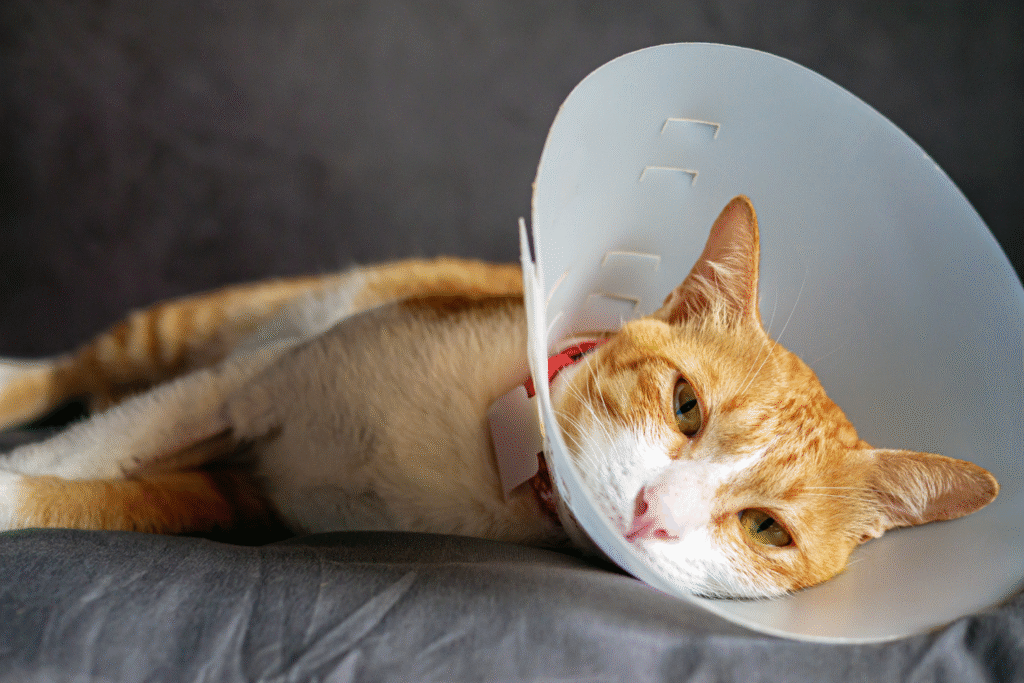
The liver is a cat’s silent multitasker, filtering toxins, producing bile, and storing nutrients without ever asking for attention. But when it starts to fail, the signs often whisper before they scream. Catching liver disease early can mean the difference between a full recovery and a sudden crisis that feels like it came out of nowhere.
Because cats are experts at hiding weakness, symptoms can appear misleading—like appetite loss, weight changes, or sudden withdrawal. Recognizing these subtle shifts isn’t about panic; it’s about paying attention to your cat’s quiet language before the illness grows louder.
1. Appetite fades even when food smells strong.
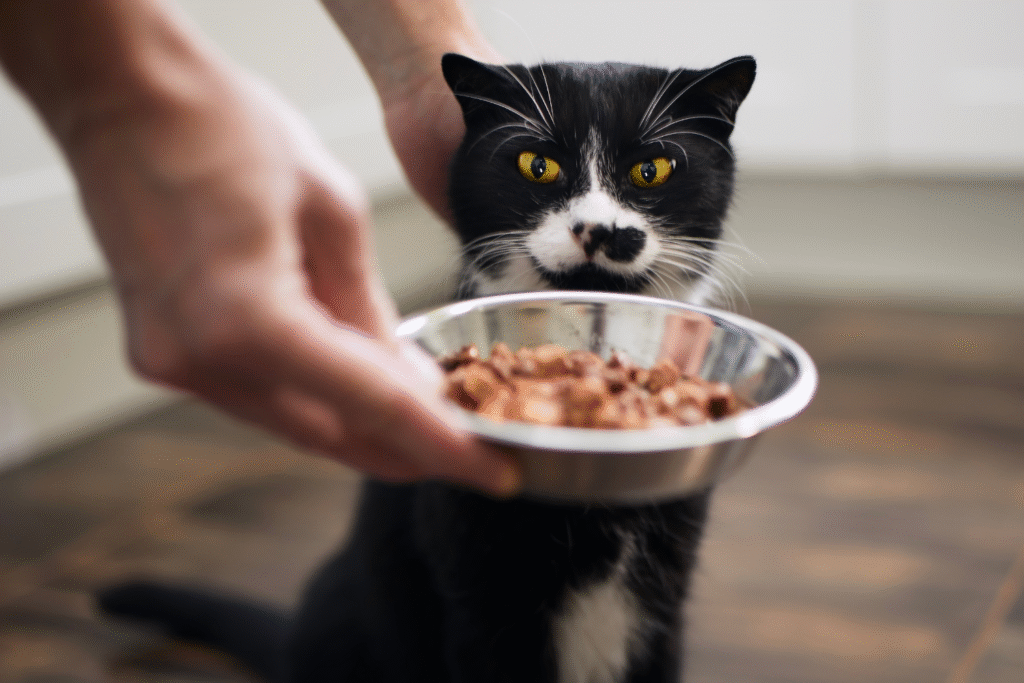
A declining appetite is one of the first noticeable signs, often emerging long before other symptoms. The liver plays a central role in metabolism and digestion, so when it struggles, the body loses its ability to process nutrients efficiently. According to the Cornell Feline Health Center, even familiar scents lose appeal because nausea builds internally, dulling hunger cues and changing how food smells to the cat.
Owners often think their pet is being picky, but this isn’t a behavioral quirk—it’s chemistry. A cat’s refusal to eat can trigger further complications, including hepatic lipidosis, where fat overwhelms the liver, creating a dangerous cycle of decline.
2. The skin and eyes start to take on a yellow tint.
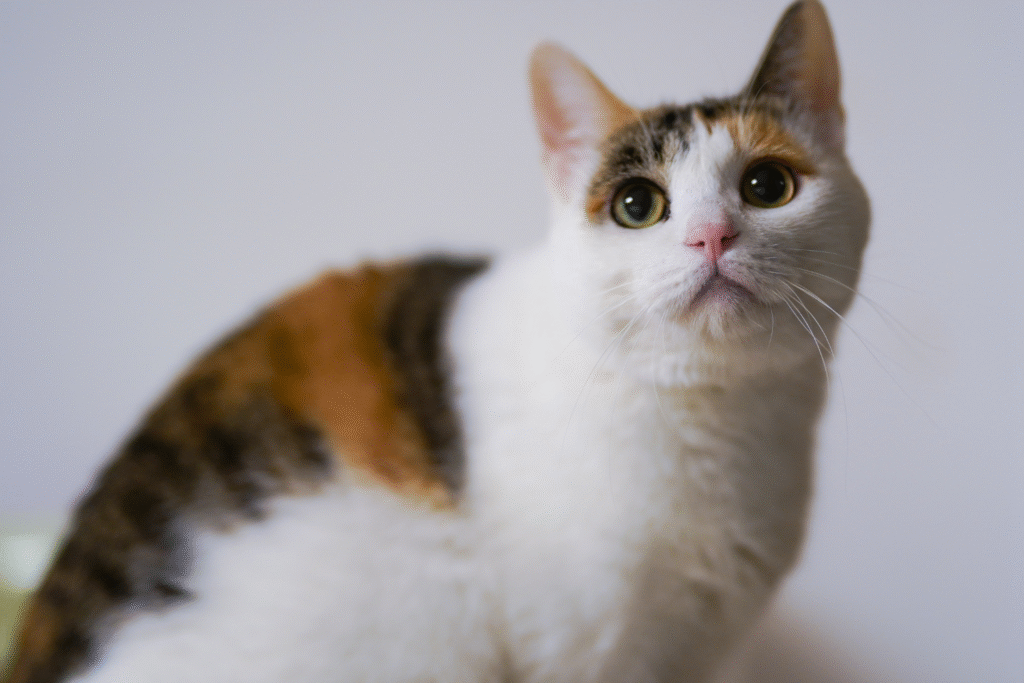
When the liver falters, bile pigments called bilirubin begin to accumulate, leading to jaundice. This yellowing, seen around the gums, eyes, and ears, reflects how deeply the organ’s filtering system has been compromised. The American Veterinary Medical Association has found that this symptom often develops only after other internal markers have already spiked abnormally high.
Owners sometimes miss it until daylight hits just right. The glow seems faint at first, like bad lighting, but it’s a biological flare. Once visible, it signals a serious stage that demands immediate medical attention, since the liver is already losing its detoxifying rhythm.
3. Vomiting turns from rare to routine within days.
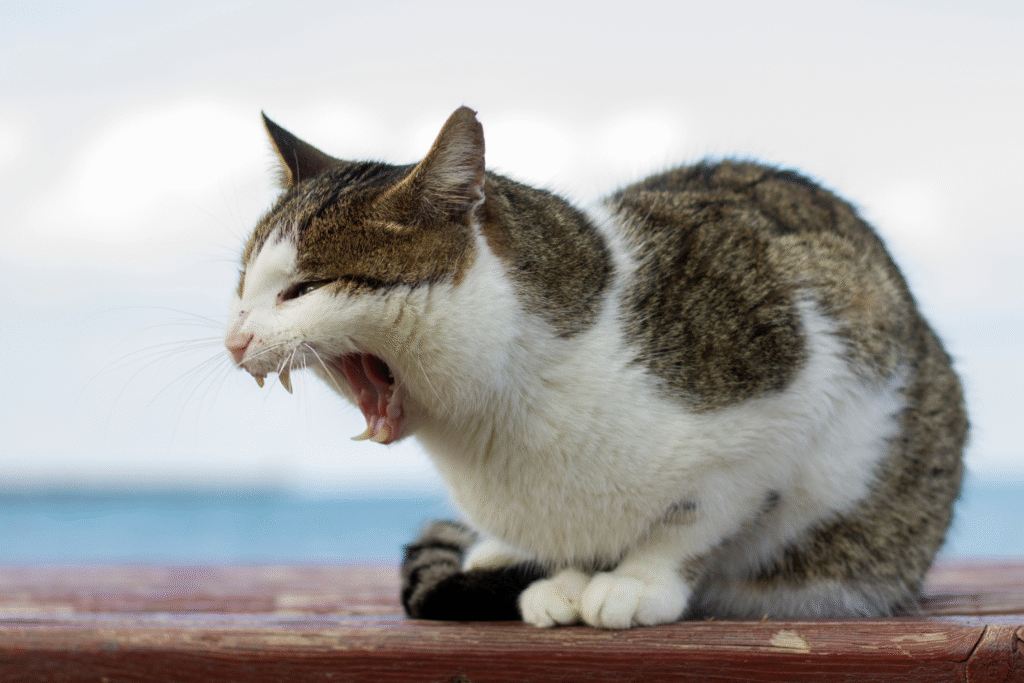
Frequent vomiting often emerges when toxins the liver can no longer clear start circulating through the bloodstream. As stated by PetMD, this buildup affects the stomach and brain alike, leading to both nausea and disorientation. The pattern feels random at first—an upset stomach here, a skipped meal there—but it gradually becomes part of the daily rhythm.
When the vomiting starts to smell sour or looks bile-streaked, it’s no longer just digestive. It’s systemic. Many cats will hide afterward, instinctively seeking quiet to recover, which makes it easy for owners to underestimate the severity.
4. Weight loss appears fast and without reason.
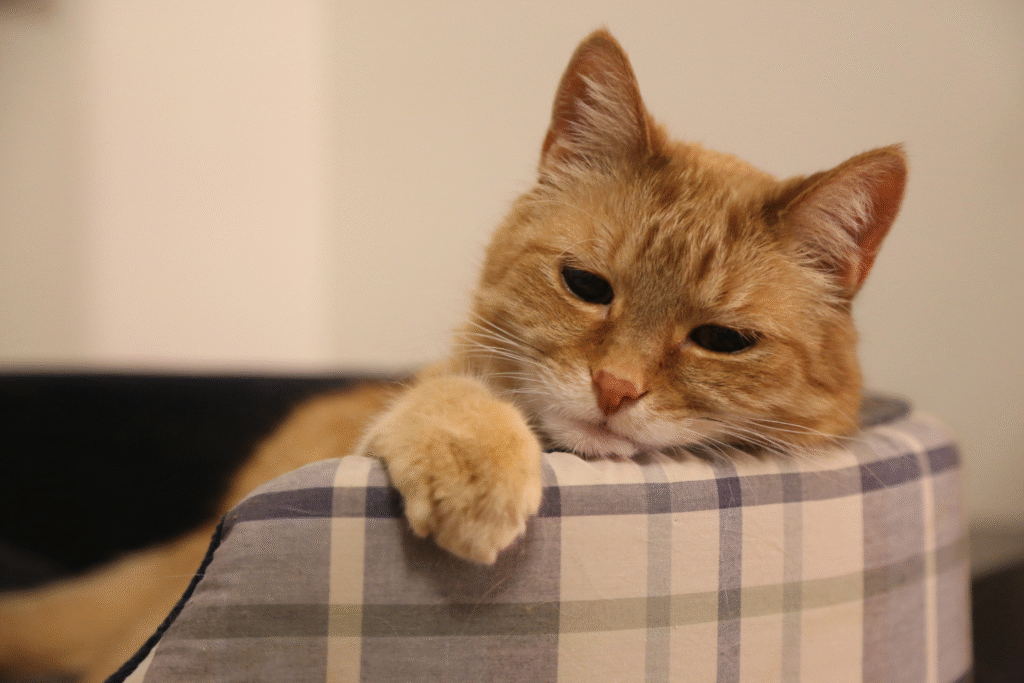
Even if food intake looks steady, liver dysfunction prevents proper nutrient absorption. The body starts burning stored fat and muscle for fuel, leaving a cat that looks slimmer every week. The change sneaks up slowly, especially under thick fur, but it’s one of the most reliable clues that something internal is wrong.
This weight loss is often paired with dull fur, brittle whiskers, and a bony spine. The visual cues align like puzzle pieces, showing how the liver’s energy-processing systems are slipping out of sync with the rest of the body.
5. The litter box becomes a silent alarm.
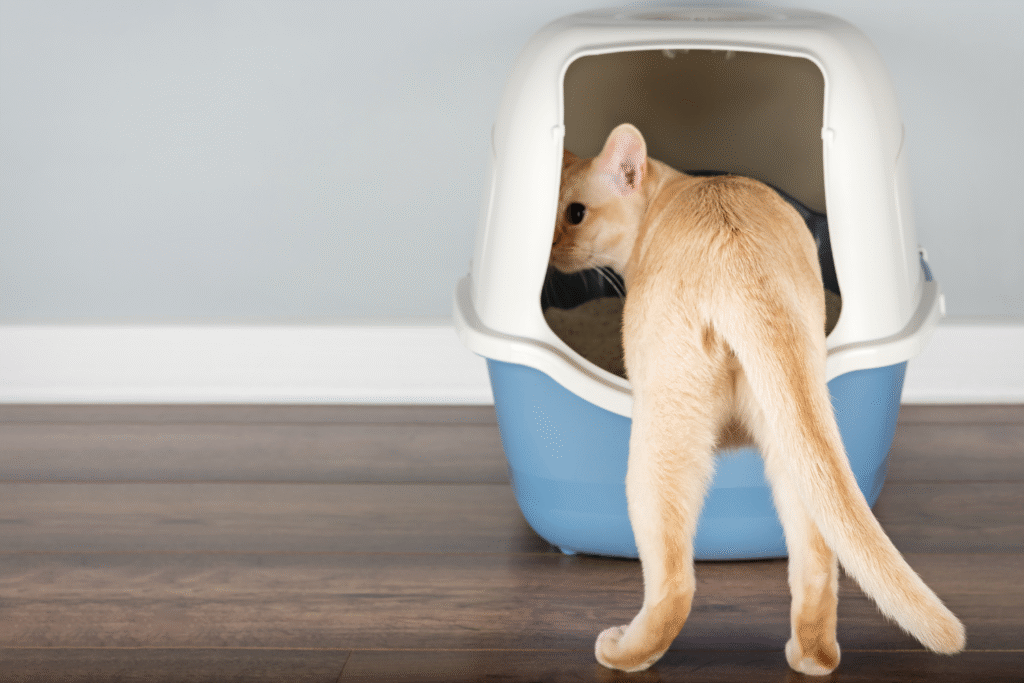
When the liver’s filtration slows, urine can turn dark amber or orange, while stool may appear pale or gray. These color shifts are direct reflections of bile imbalance and the body’s attempt to expel waste through alternate routes.
Few owners connect these changes right away, but the litter box quietly records the story the liver is too overworked to tell. Checking color and frequency regularly can help catch liver distress early, especially when combined with other subtle behavioral shifts.
6. Energy levels drop into an unexplained slump.
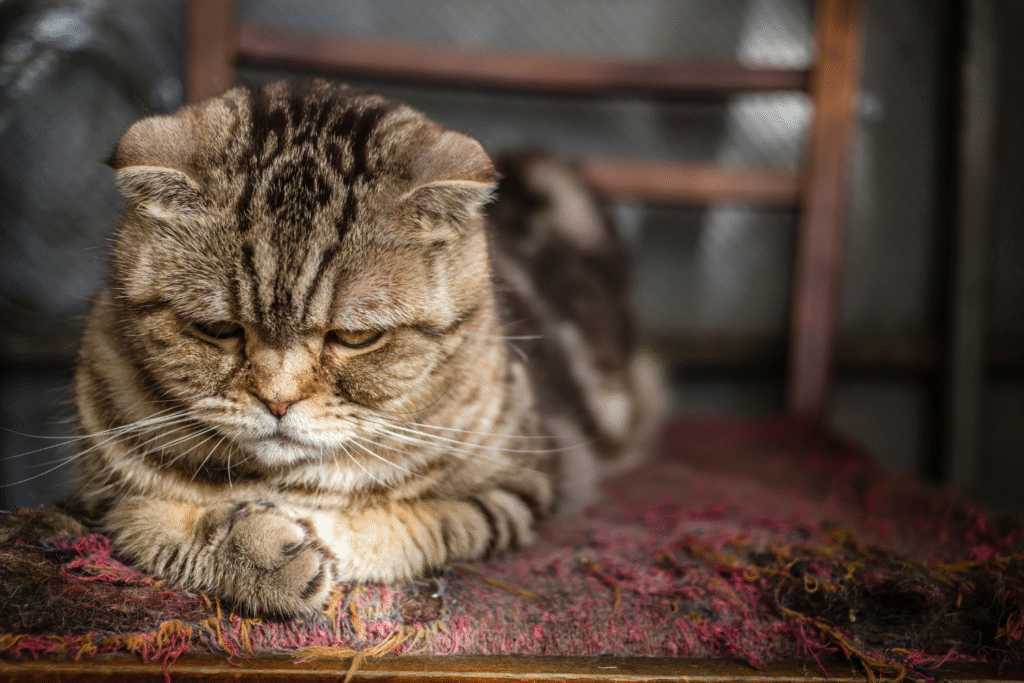
The fatigue of liver failure is more than laziness—it’s systemic exhaustion. Toxin buildup affects oxygen delivery and brain function, making everyday actions like walking or jumping feel taxing. The cat may sleep longer but rest less effectively.
Unlike normal tiredness, this lethargy doesn’t fade after food or play. It lingers. Some cats stop greeting their owners or retreat from activity entirely. When this fatigue aligns with reduced appetite or odd litter habits, it forms a clearer picture of organ strain.
7. Gums reveal the truth when everything else looks normal.
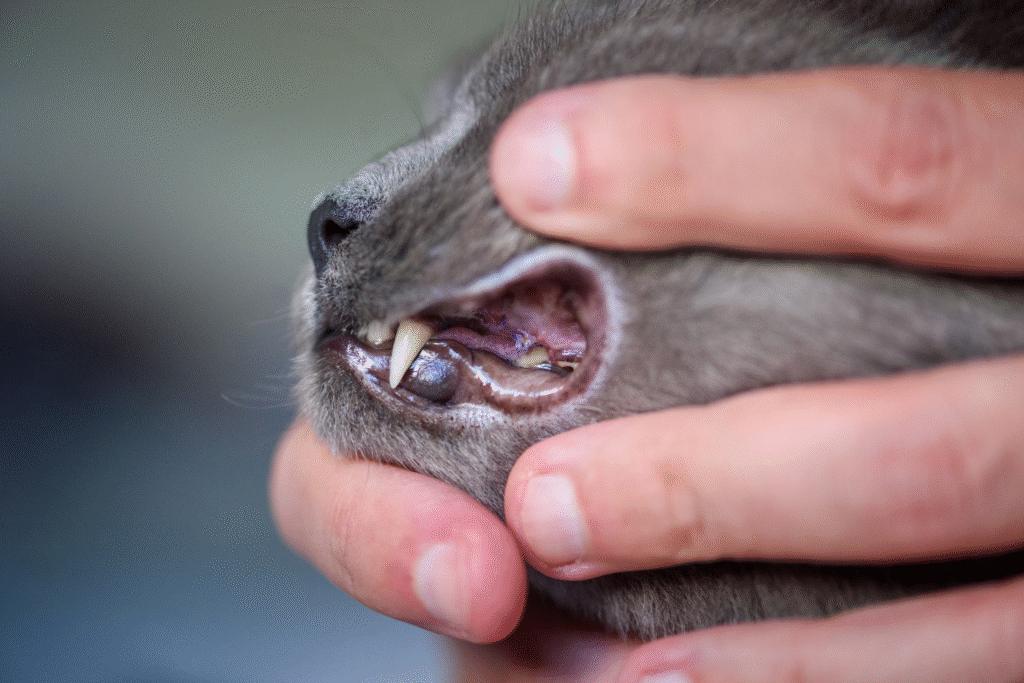
Healthy gums should appear pink and hydrated, but when the liver begins to fail, they often turn pale, yellowish, or even slightly greenish near the edges. This discoloration reflects both blood chemistry changes and oxygen delivery issues.
Checking the gums gives an immediate, visible clue that something deeper is happening. Many vets rely on this quick inspection to determine how urgently bloodwork should follow. For owners, it’s one of the simplest ways to spot decline at home without specialized tools.
8. Confusion or unsteady movement starts to appear.
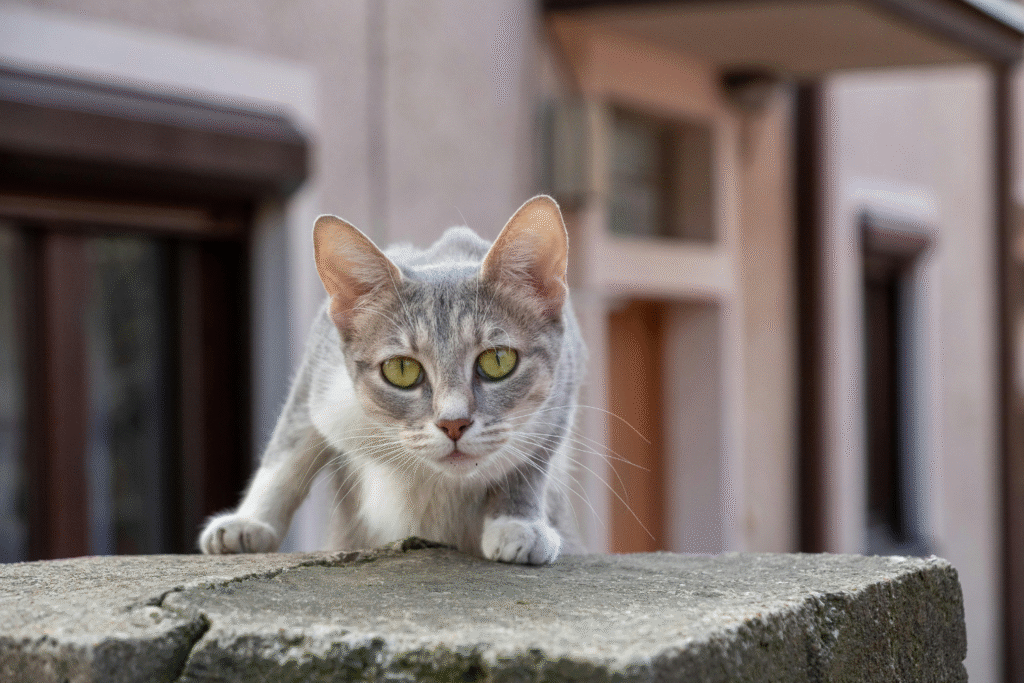
When toxins reach the brain—a condition called hepatic encephalopathy—cats may act dazed or clumsy. They can walk into walls, stare blankly, or forget familiar routines. It looks neurological, but the root cause lies in blood chemistry, not the brain itself.
These cognitive slips are especially concerning because they indicate toxins circulating freely. The disconnection between thought and movement is one of the last stages before collapse, which makes immediate veterinary intervention critical.
9. The belly begins to swell as fluids collect.
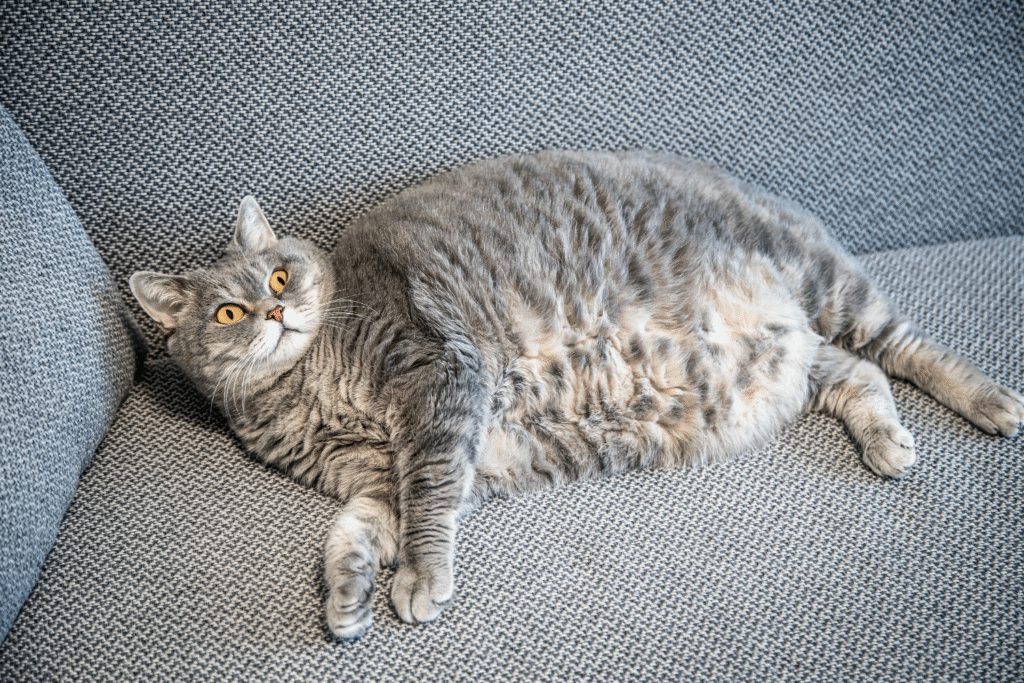
As the liver loses control over blood pressure and protein balance, fluid seeps into the abdomen, creating a soft, round swelling. The condition, called ascites, is both visual and tactile—you can often feel the liquid shifting beneath the skin.
This swelling makes the cat appear suddenly fuller, even as the ribs and spine stay sharp. It’s a deceptive contrast that suggests weight gain, when in fact it’s the body struggling to regulate itself under severe internal pressure.
10. Breath develops a strange metallic or sweet odor.
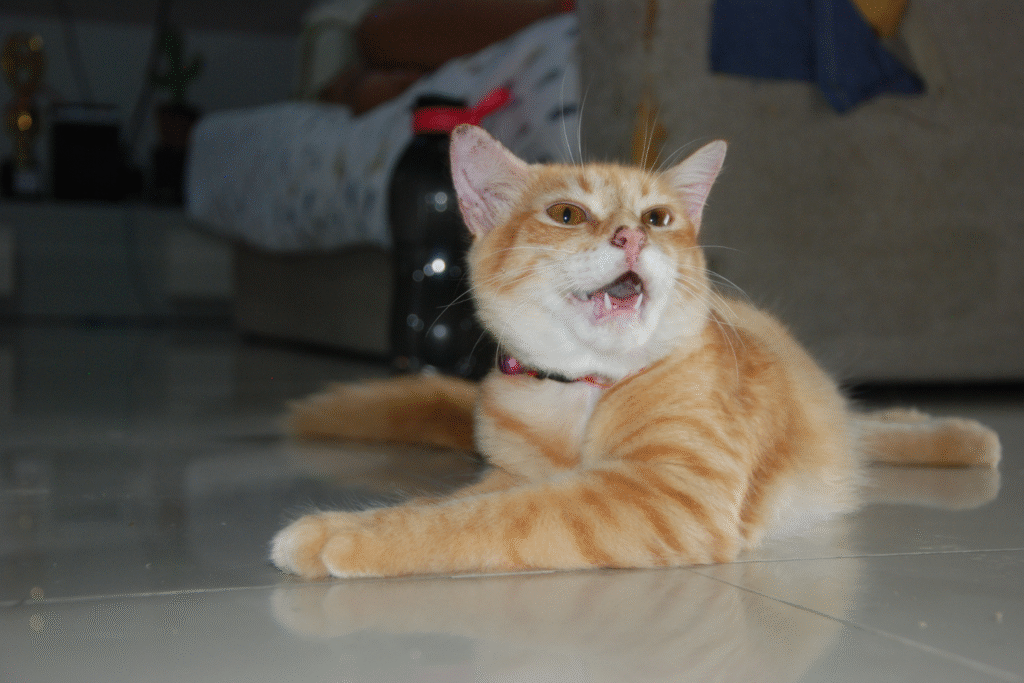
One of the lesser-known signs of liver distress is halitosis with a distinct metallic or slightly sweet tone. This scent results from compounds that build up when detoxification slows. Owners sometimes notice it during grooming or cuddles, unaware it’s a biochemical marker of organ failure.
It’s subtle but unmistakable once recognized. The odor comes not from the mouth itself but from the bloodstream, escaping through the lungs. When combined with appetite loss or jaundice, it strengthens the case for immediate testing.
11. The cat’s personality shifts in quiet, unsettling ways.

A cat with liver failure may seem distant or unusually clingy, restless one day and apathetic the next. These emotional swings aren’t behavioral—they’re physiological, triggered by fluctuating toxin levels and energy reserves.
You might notice them staring into space, avoiding touch, or meowing in confusion. These changes are the body’s way of coping with discomfort that words can’t express. It’s a final signal before collapse, often overlooked because it feels emotional rather than medical.
12. Blood tests reveal the truth before the eyes can.
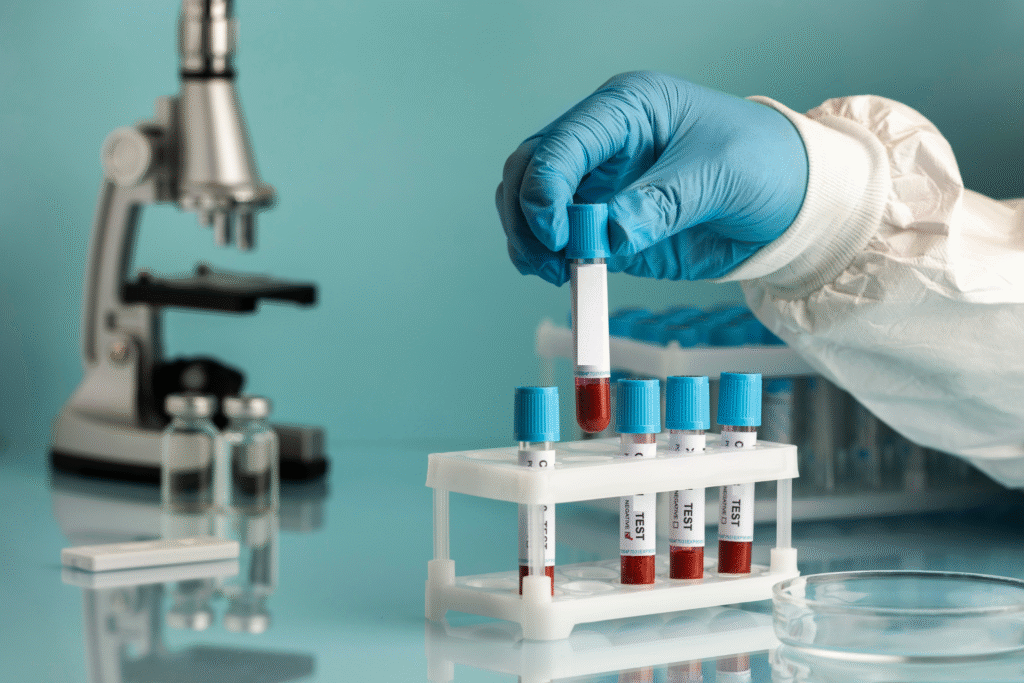
Liver disease hides well, but blood chemistry exposes it early. Elevated enzymes like ALT, AST, and bilirubin confirm the damage before visible symptoms fully appear. Regular testing, especially in older cats, gives owners a chance to intervene while the condition is still reversible.
It’s often not the dramatic signs but the data that saves lives. A simple test during a routine exam can reveal what even the most observant eye can’t catch, buying time for treatment, diet changes, and a return to balance before the quiet organ fails entirely.
